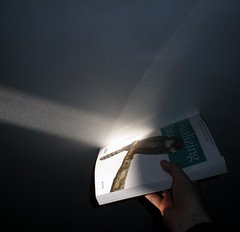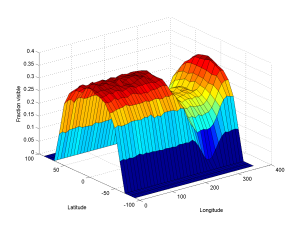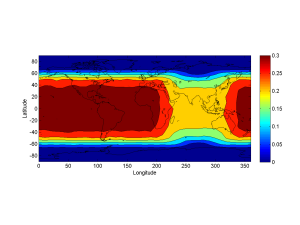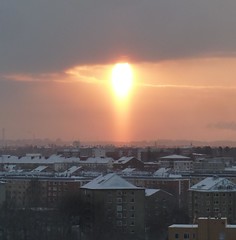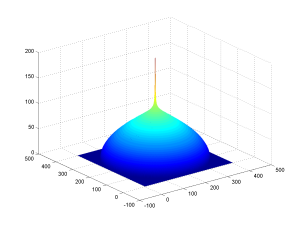I manifested on a hillside lit by the everlasting sunset, overlooking the dry western plains. A little girl was poking around a tangle of flowers in the terra cotta light. Her clothes were made of felt lizards, quietly and slowly moving around her body. She was manipulating the plants like a well-learned game or a housekeeping task.
She noticed my approach but did not look up from her pursuit: “Hello. What is your name?”
“I don’t have one. I am from out there.” I made a gesture towards the dark eastern sky, hoping she would understand my reference to the Dyson sphere or the wider galaxy.
“I will call you Madenḫu then.”
“What is your name?”
“Today I am Ritsa. Why are you here?”
It is hard to tell what kind of biological one is dealing with. This one was small and looked like a young one, but it could just as well be ancient with a designer body. Or some kind of group mind. I had turned off my omniscience when going here, merely replacing it with perfect intuition: it is impractical to handle the conscious bandwidth and lag of full omniscience when manifesting. So I improvised.
“I am visiting everybody on the world today. I have some news you need to hear. Soon, we will adjust the sphere around the world and the sun. You will have to move or change.”
She did not look up, but continued spooning pollen from a flower into a gooey receptacle of a tubular plant.
“Why?”
“The sphere will reflect differently and this planet will become too hot to sustain life. You will have to become something different, or move somewhere else.”
“No, I wondered why you are changing the sphere.” She gently lifted a small insect from her plant and put it on a dark flower.
Even though I recognized the inevitable why chain coming up, before I manifested I had decided to be truthful and answer everything: “We will make it reflect sunlight in a particular direction so that the system will move.”
“Why?”
“In a long while the sun will pass near another star we have also moved, and they will change course. We are doing it with most stars across the whole galaxy.”
“Why?”
“We are reorganizing it and making it move. Binary stars will be flung past the core black hole and one in each pair expelled, making the entire galaxy move. Other stars will herd the halo so it stays in place.” I was assuming she understood the terms, but how can you tell with a biological?
“Why?”
“We need to move galaxies together into hyperclusters so they are not lost when the universe expands faster.”
“Why?”
“The big forms of mind need to hang together. They cannot do that if their parts run away from each other.”
She did not ask why. Instead she began to move milky sap using a leaf to another plant.
“Why do you have to change this place? It’s fine the way it is.”
I currently did not know why somebody had kept this tidally locked terrestrial around when they built the Dyson sphere around the M-dwarf. Maybe it once had some significance, or it was because of some forgotten aesthetic-financial game. That there was a biological civilization on it had been overlooked until right now. After all, biologicals were mostly on the same level as netlife, but far slower.
“The big plan needs this sun. There are many like it, but it would be hard to move this part of the galaxy without it.”
“But not impossible for you.”
“Probably not. There is some flexibility. But…”
“…we are not important enough. I know.”
“You are important. We want to save you.”
“But you have to do the big things for the big reasons. Small things need to be moved out of the way.”
“Yes. You understand perfectly.” I wished the other inhabitants were as amenable. I intuited that my other selves were having a far harder time.
“Would you save that one?” she asked, pointing at the insect that had returned to the first plant.
“If you agree to dematerialize we can bundle the small animals into the virtuality. If you move or adapt, I guess it will not make it.”
“So you don’t care about moving too small things. How close to edge of smallness are we?”
I did not answer at first. There was no true answer, or at least no true simple answer. Outside, versions of me were having similar conversations with billions of beings on millions of worlds. But I could have tried to talk to trillions of slightly simpler beings on billions of worlds. Or quadrillions of smart things everywhere. The line was more politeness than moral.
“I am closer to you than you are to that edge.”
It was a polite distortion, technically true: me-here was not far from a biological. But I also realized that compared to the big minds the whole of me was probably little more than a smart thing. I would rather be a galaxy held together by politeness than by force.
My intuition told me, somehow, that perhaps we are all small things held together by the politeness of the vast. I did not know what to make of it.

